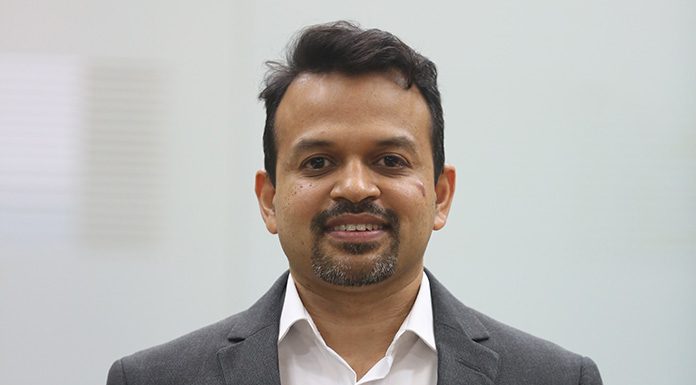Telecom service providers in India and across the globe are increasingly leveraging data as a means to drive business value and enhance customer experience. Thus, traditional software applications are giving way to new analytics-driven models incorporating the latest trends such as Artificial Intelligence (AI). These innovations will help telecom operators expand the scope of their OSS/BSS applications to newer areas and address the new challenges arising from stiff competition and frauds.
In their ongoing journey as digital service providers (DSPs), telcos are met with several new challenges brought by the complex digital ecosystem encompassing myriads of devices, partners and platforms. To compete in the digital space, they need to explore innovative strategies that will help them identify new opportunities and secure revenue streams. As the business landscape expands, the risks associated with frauds and revenue leakage also rises.
In this backdrop, Subex has identified the following five trends that will impact the Telecom Software space in 2019 and telecom service providers in India or anywhere in the world must watch out for.
1) Rapid AI-driven innovation thanks to Cloud
Until recently Cloud was known for its flexibility and cost savings. However, this is changing as Cloud enables rapid transformation around AI. Telcos and telco software providers can now take advantage of sophisticated AI capabilities thanks to easy access on Cloud. Google, Amazon and Microsoft are at the forefront of providing easy-to-access AI/Self-Serve AI in the Cloud which will enable innovation to take place at a scale and pace which was not possible before. AI innovation will continue to drive net-new digital services, business optimization and risk management opportunities at enterprises.
2) Revenue Assurance matures to Margin Assurance and Enterprise Risk Management
There are three sub trends impacting the telecom Revenue Assurance (RA) space: Revenue Assurance is pivoting to “Margin” Assurance. In a convergent business environment, most Telco RA teams have shifted focus from attempting to reconcile the entire revenue chain to actually focusing on the viability of the underlying business model itself (this viability is measured in terms of the Margin).
Instead of a fully centralized team for all assurance activities, Primary/Secondary control frameworks are gaining popularity. In this model, RA responsibilities are distributed to the system owners themselves for controls pertaining directly to systems under their purview, and the core Revenue Assurance team would focus on the “Business” aspect of the RA charter like margins, partner risk, etc. This in turn has also spawned RA control mechanisms which are closer to the network/interface elements, as opposed to a centralized data processor.
Given the ever-widening gambit of offerings from telcos ranging from banking to content creation, Revenue Assurance itself is expanding to larger Risk Management principles as opposed to traditional monitoring-based Revenue Assurance.
3) Ageing of the legacy network – migration and consolidation opportunities


Some of the largest network operators in the world, especially in the developed markets, continue to operate ageing backend networks. Many of them have reached the inflection point and they need to change over to newer technologies. The drivers of this transformation are multiple. For example, ageing networks are expensive to operate and maintain. They require larger real-estate foot print and higher energy spend, and the workforce required to maintain them is rapidly growing.
On the opportunity side, newer networks are significantly faster to provision, bringing down time to market and making room for new monetization opportunities. While there is a lot of buzz around SDN and NFV, you still need to have the right physical infrastructure, the confluence of DWDM (Dense Wavelength Division Multiplexing), OTN (Optical Transport Network) and Packet Optical transport networks.
Network transformation will bring significant opportunities for analytics providers. With analytics, telcos can rationalize the legacy network to understand the problem areas and prioritize the investment. The detailed reports will deliver information such as areas of capacity constraints and the areas of underutilization, so they can optimize the resources accordingly.
4) Security takes center stage
In the last couple of years, IoT was tied up in POCs, experiments and building business cases. Many of these projects are now paving way for commercial deployments. While security was an afterthought in the POCs, it is now becoming a key requirement in production roll- outs.
We are also seeing convergence of Operational Technologies (such as SCADA systems running industrial shop-floors) and IT networks. This exposes traditionally air-gapped operational technology systems with limited security capabilities to new kinds of security vulnerabilities. This will open a new opportunity in IoT Security segment, and vendors will see increased traction in IoT security adoption among telcos.
5) Fraud in digital services
Telco fraud management has so far focused on subscription data, payment transaction data and customer usage behavior as seen in CDRs. However, the rapid rollout of digital technologies and services is opening the telco systems to new kinds of vulnerabilities. Fraudsters are increasingly targeting SIP network, SS7/ Diameter networks and various IP links such as the GN link. Considering the wide implications these frauds can have on the telco business and the entire digital ecosystem, the telecom service providers in India and the overall market will adopt measures to effectively combat and prevent digital frauds.
The author is Head of Strategy and Products at Subex







